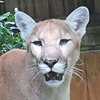HOME | DD
 Sabreleopard — Cabela Safari: Zebra and Wildebeest Herd
Sabreleopard — Cabela Safari: Zebra and Wildebeest Herd

Published: 2023-10-04 06:36:39 +0000 UTC; Views: 980; Favourites: 2; Downloads: 0
Redirect to original
Description
Still on our Cabela Safari adventure, we go further to the watering hole and we see a small mixed herd of three plains zebras, three blue wildebeests, and a southern reedbuck coming together for a drink while looking for any danger nearby. Little do any of them know, however, that they are being watched and stalked from below the water and it's approaching them, fast but quietly...Also (appropriately) called the common zebra, the plains zebra happens to be the most common and geographically widespread species (with its range spanning much of southern and eastern Africa south of the Sahara, despite it being fragmented), with the other two species being the mountain zebra and the Grevy's zebra (one way to tell the plains zebra apart from the other two is its stripes tending to be broader than that of the other two zebra species). The preferred habitats for plains zebras are treeless grasslands and savanna woodlands. Being highly social animals, plains zebras form harems, which consists of several mares with their foals and a lone stallion. This species' main predators are lions, spotted hyenas, and Nile crocodiles, though, even to a lesser constant, leopards, cheetahs, and African wild dogs would hunt zebras, but usually target the young. Yet, the zebras keep watch for predators and bark or snort when they see a predator. The harem stallion attacks predators to defend his harem.
Despite looking like a mixed up animal, blue wildebeests are really large antelopes. Also called the common wildebeest, white-bearded gnu or brindled gnu, the blue wildebeest is one of the two wildebeest species (the other being the black wildebeest). Some of the most common species in Africa, blue wildebeest are native to the short-grass plains bordering bush-covered acacia savannas of southern and eastern Africa. Blue wildebeests are a main prey item to many predators, including lions, cheetahs, leopards, African wild dogs, hyenas, and crocodiles. They commonly associate with plains zebras, as the zebras eat the upper, less nutritious grass canopy, exposing the lower, greener material which the wildebeest prefer.
The reedbuck is diurnal and native to the floodplains, pastures, woodlands, and valleys of Southern Africa. Also called rietbok or common reedbuck, this antelope lives either in pairs or alone. The reedbuck has a long list of predators, which includes lions, leopards, cheetahs, spotted hyenas, Cape hunting dogs, pythons, and crocodiles. However, it can escape predators by camouflaging themselves in the grasslands since their coats match the color of the tall grass.






















